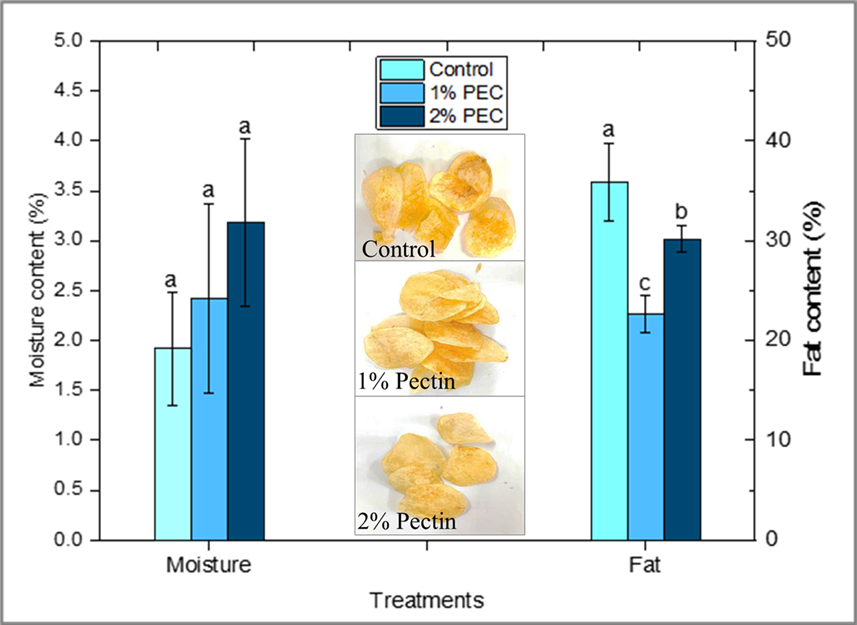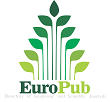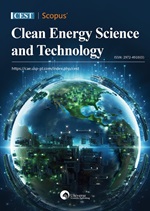Banana peel pectin edible coating reduces oil absorption into fried potato chips
DOI:
https://doi.org/10.18686/fnc212Keywords:
Banana peel; pectin; edible coatings; potato chips and fat uptakeAbstract
Banana peels are thrown away in large amounts as waste. Furthermore, the food and pharmaceutical industries consider the use of waste banana peels as a valuable polysaccharide like pectin. Therefore, the objective of this study was I. extracting pectin from the banana peels and Ⅱ. using the extracted pectin as an edible coating to reduce lipid uptake in fried potato chips. The extraction of pectin was done in acidified water (pH 2) using HCl and heated at 95 °C for 4 h under continuous stirring. The extracted pectin characterization was done by analyzing the spectra of FTIR, moisture and ash, methoxyl (MeO), total anhydrouronic acid (AUA) contents as well as the equivalent weight (Eq. wt) and degree of esterification (DE). A frying experiment was conducted to investigate the pectin as an edible coating and its impact on reducing lipid uptake in fried potato chips. Pectin showed a moisture content of 5.89% with an ash content of 13%, an Eq. wt of 1562.5, a MeO of 6.82, an AUA of 49.98%, and a DE of 77.47%. The extracted pectin proved to be an excellent choice for edible coatings, leading to a significant reduction in fat absorption by fried potato chips. Additionally, the pectin coating improved the moisture content and sensory qualities compared to uncoated chips. Thus, this study suggests that pectin-based edible coating derived from banana peel reduces lipid uptake in fried potato chips.

Downloads
Published
How to Cite
Issue
Section
License
Copyright (c) 2025 Author(s)

This work is licensed under a Creative Commons Attribution 4.0 International License.
References
1. FAO. Food and Agriculture organization statistics, world production of bananas in 2022. FAO; 2022.
2. Gebre GG, Fikadu AA, Gebeyehu TK. Is banana value chain in East Africa sustainable? Evidence from Ethiopia. Resources, Environment and Sustainability. 2022; 8: 100060. doi: 10.1016/j.resenv.2022.100060 DOI: https://doi.org/10.1016/j.resenv.2022.100060
3. Jahanbakhshi A, Rasooli Sharabiani V, Heidarbeigi K, et al. Evaluation of engineering properties for waste control of tomato during harvesting and postharvesting. Food Science & Nutrition. 2019; 7(4): 1473–1481. doi: 10.1002/fsn3.986 DOI: https://doi.org/10.1002/fsn3.986
4. Krungkaew S, Hülsemann B, Kingphadung K, et al. Methane production of banana plant: Yield, kinetics and prediction models influenced by morphological parts, cultivars and ripening stages. Bioresource Technology. 2022; 360: 127640. doi: 10.1016/j.biortech.2022.127640 DOI: https://doi.org/10.1016/j.biortech.2022.127640
5. Scott GJ. A review of root, tuber and banana crops in developing countries: past, present and future. International Journal of Food Science & Technology. 2020; 56(3): 1093–1114. doi: 10.1111/ijfs.14778 DOI: https://doi.org/10.1111/ijfs.14778
6. Kamble PB, Gawande S, Patil TS. Extraction of pectin from unripe banana peel. Int Res J Eng Technol. 2017; 4: 2259–2264.
7. Khamsucharit P, Laohaphatanalert K, Gavinlertvatana P, et al. Characterization of pectin extracted from banana peels of different varieties. Food Science and Biotechnology. 2017; 27(3): 623–629. doi: 10.1007/s10068-017-0302-0 DOI: https://doi.org/10.1007/s10068-017-0302-0
8. Tanaid RAB, Lauzon RD. Extraction Optimization of Pectin from Unripe Banana (Musa acuminata × balbisiana var. Cardaba) Peel. ETP International Journal of Food Engineering. Published online 2018: 308–315. doi: 10.18178/ijfe.4.4.308-315 DOI: https://doi.org/10.18178/ijfe.4.4.308-315
9. Pagarra H, Hartati, Purnamasari AB, et al. Optimization of pectin extraction from kepok banana peels (musa paradisiaca) using surface response methodology. Journal of Physics: Conference Series. 2019; 1317(1): 012100. doi: 10.1088/1742-6596/1317/1/012100 DOI: https://doi.org/10.1088/1742-6596/1317/1/012100
10. Petkowicz CLO, Vriesmann LC, Williams PA. Pectins from food waste: Extraction, characterization and properties of watermelon rind pectin. Food Hydrocolloids. 2017; 65: 57–67. doi: 10.1016/j.foodhyd.2016.10.040 DOI: https://doi.org/10.1016/j.foodhyd.2016.10.040
11. Mioara N, Mihai AL, Iorga E, et al. Fatty Acids and Trans Fatty Acids Profile of Potato Chips and French Fries Marketed in Romania. Revista de Chimie. 2020; 71(1): 456–465. doi: 10.37358/rc.20.1.7875 DOI: https://doi.org/10.37358/RC.20.1.7875
12. WHO. WHO Updates Guidelines on Fats and Carbohydrates. WHO; 2023.
13. Kolagi S, T H, Wantamutte S, Deaai S. Effect of Pre-frying coating of potato slices with pectin and guar gum on quality and quantity of potato chips. J. Farm Sci. 2021; 34(04): 460–462.
14. Yang X, Nisar T, Liang D, et al. Low methoxyl pectin gelation under alkaline conditions and its rheological properties: Using NaOH as a pH regulator. Food Hydrocolloids. 2018; 79: 560–571. doi: 10.1016/j.foodhyd.2017.12.006 DOI: https://doi.org/10.1016/j.foodhyd.2017.12.006
15. Castillo-Israel KAT, Baguio SF, Diasanta MDB, et al. Extraction and characterization of pectin from Saba banana [Musa’saba’ (Musa acuminata x Musa balbisiana)] peel wastes: A preliminary study. Int Food Res J. 2015; 2.
16. AOAC CA. Official methods of analysis of the Association of Analytical Chemists International. Off Methods Gaithersburg, MD, USA; 2005.
17. Devi WE, Shukla RN, Abraham A, et al. Optimized extraction condition and characterization of pectin from orange peel. Int J Res Eng Adv Technol. 2014; 2: 1–9.
18. Hua X, Wang K, Yang R, et al. Edible coatings from sunflower head pectin to reduce lipid uptake in fried potato chips. LWT—Food Science and Technology. 2015; 62(2): 1220–1225. doi: 10.1016/j.lwt.2015.02.010 DOI: https://doi.org/10.1016/j.lwt.2015.02.010
19. Latif, NAM, Rabi, AAM, Mohamad, DAM, et al. Fat reduction and characteristic enhancement of edible composite coating (Pectin-Maltodextrin) on fried potato chips. Mater Today Proc. 2020; 31: A79–A84. doi: 10.1016/j.matpr.2020.12.659 DOI: https://doi.org/10.1016/j.matpr.2020.12.659
20. Zheng K, Xiao S, Li W, et al. Chitosan-acorn starch-eugenol edible film: Physico-chemical, barrier, antimicrobial, antioxidant and structural properties. International Journal of Biological Macromolecules. 2019; 135: 344–352. doi: 10.1016/j.ijbiomac.2019.05.151 DOI: https://doi.org/10.1016/j.ijbiomac.2019.05.151
21. Abdullah AHD, Chalimah S, Primadona I, et al. Physical and chemical properties of corn, cassava, and potato starchs. IOP Conference Series: Earth and Environmental Science. 2018; 160: 012003. doi: 10.1088/1755-1315/160/1/012003 DOI: https://doi.org/10.1088/1755-1315/160/1/012003
22. Mohamadzadeh J, Sadeghi-Mahoonak AR, Yaghbani M, et al. Extraction of pectin from sunflower head residues of selected Iranian cultivars. World Appl Sci. J. 2010; 8: 21–24.
23. Ahsan M, Ashraf H, Iahtisham-Ul-Haq, et al. Exploring pectin from ripe and unripe Banana Peel: A novel functional fat replacers in muffins. Food Chemistry: X. 2024; 23: 101539. doi: 10.1016/j.fochx.2024.101539 DOI: https://doi.org/10.1016/j.fochx.2024.101539
24. Israel KA. A comparative study on characteristics of pectins from various fruit peel wastes extracted using acid and microbial enzymes. J Microbiol Biotechnol Food Sci. 2019; 9: 216–221. doi: 10.15414/jmbfs.2019.9.2.216-221 DOI: https://doi.org/10.15414/jmbfs.2019.9.2.216-221
25. Mugampoza D, Gafuma S, Kyosaba P, et al. Characterization of Pectin from Pulp and Peel of Ugandan Cooking Bananas at Different Stages of Ripening. Journal of Food Research. 2020; 9(5): 67. doi: 10.5539/jfr.v9n5p67 DOI: https://doi.org/10.5539/jfr.v9n5p67
26. Altaf U, Immanuel G, Iftikhar F. Extraction and characterization of pectin derived from papaya (Carica papaya Linn.) peel. Int J Sci Eng Technol. 2018; (3): 970–974. doi: 10.2348/ijset07150970
27. Shaha RK, Punichelvana YNA, Afandi A. Optimized extraction condition and characterization of pectin from kaffir lime (Citrus hystrix). Res J Agric For Sci; 2013.
28. Arslan M, Xiaobo Z, Shi J, et al. Oil Uptake by Potato Chips or French Fries: A Review. European Journal of Lipid Science and Technology. 2018; 120(10). doi: 10.1002/ejlt.201800058 DOI: https://doi.org/10.1002/ejlt.201800058
29. Garmakhany, AD, Mirzaei HO, Maghsudlo Y, et al. Production of low-fat french-fries with single and multi-layer hydrocolloid coatings. J Food Sci Technol. 2014; 51: 1334–1341. doi: 10.1007/s13197-012-0660-9 DOI: https://doi.org/10.1007/s13197-012-0660-9
30. Gomez MH, Lee JK, McDonough C, et al. Corn starch changes during tortilla and tortilla chip processing. Cereal Chem. 1992; 69: 275–279.
31. Mcdonough C, Gomez MH, Lee JK, et al. Environmental Scanning Electron Microscopy Evaluation of Tortilla Chip Microstructure During Deep-Fat Frying. J Food Sci. 1993; 58: 199–203. doi: 10.1111/j.1365-2621.1993.tb03244.x DOI: https://doi.org/10.1111/j.1365-2621.1993.tb03244.x




.jpg)
.jpg)

